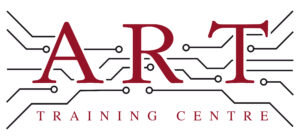Definition
LQFP stands for Low-Profile Quad Flat Package. It is a type of surface-mount integrated circuit package that features leads on all four sides, designed for efficient space utilisation on printed circuit boards (PCBs). Its low-profile design allows for better thermal performance and can accommodate a higher pin count compared to traditional packages. LQFPs are essential components in electronics manufacturing, particularly in compact devices where space is a premium.
How It’s Used in the Industry
LQFPs are widely used in electronics assembly, particularly in surface mount technology (SMT). During the assembly process, LQFPs are placed on PCBs using automated pick-and-place machines. The leads are then soldered onto the board, typically using reflow soldering techniques. For repair or rework, technicians may need to desolder and replace LQFPs using hot air tools or soldering irons. Understanding LQFPs is crucial for both trainees and experienced professionals, as it impacts the reliability and performance of the final electronic products.
History & Origins
The LQFP package became common in the late 1990s as the demand for compact and efficient electronic devices grew. The development of surface mount technology and the standardisation of package sizes helped facilitate its adoption. Standards such as IPC-7351 provided guidelines for LQFP design and assembly, ensuring compatibility and reliability across various applications. As technology advanced, LQFPs became integral to the production of consumer electronics, automotive systems, and communication devices.
Variations
There are several variations of LQFP, including different pin counts, lead pitches, and thermal characteristics. For instance, LQFPs can come in 32, 48, or 64 pins, depending on the application needs. Compared to other packages like QFN (Quad Flat No-lead), LQFPs offer easier visual inspection and handling due to their exposed leads. Understanding these variations is important for engineers and technicians when selecting the appropriate package for specific applications.
Modern Applications
Today, LQFPs are extensively used in various electronics production sectors, including consumer electronics, automotive, and industrial applications. They are particularly relevant in surface mount assembly where space is limited. LQFPs are also important in professional training programs, as they exemplify modern assembly techniques and compliance with IPC standards. Their reliability and performance make them a preferred choice for ensuring quality in electronic manufacturing.
Practical Tips & Training
When working with LQFPs, it’s essential to ensure proper handling to avoid damaging the leads. Use anti-static wrist straps and work on ESD-safe surfaces. For inspection, magnifying tools or microscopes can help check solder joints for quality. Structured training and certification in electronics are vital for mastering LQFP assembly and repair techniques, enhancing both skill and confidence in handling these components.


